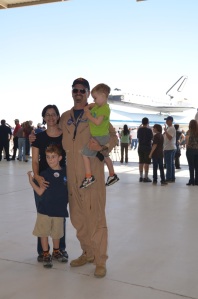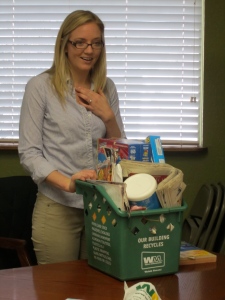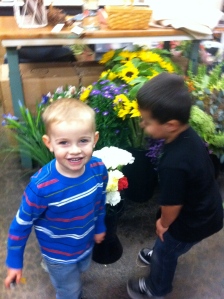Though I’ve lived in the Los Angeles area for almost 13 years, I’ve only been to the Getty Villa three times. I visited once in 1996 before the museum closed for a nearly 10-year renovation. I went back in 2007 with my almost-one-year-old. In fact, I have fond memories of Cooper “army crawling” on the tile around the fountain in the Outer Peristyle garden.

Then, I didn’t go back for almost five years. It probably had something to do with nap schedules, diaper changes and worries about the boys jostling ancient Greco-Roman pottery. But honestly, the biggest reason I didn’t go back was because I’d rather see a Rembrandt than a Roman drinking vessel.
I know my lack of enthusiasm is a direct result of my limited knowledge. I never studied the Greco-Roman world, and I know little about the culture and art work. One vase looked similar to all the others –until my most recent trip. The Getty has done a tremendous job of making ancient Greece and Rome accessible to children and parents as well.
Getty staff have developed three different sets of “Art Detective” cards. The front of each card directs you to a specific gallery, shows you a picture of an artwork and poses a question. For example, in Gallery 207, we were to find a statue of a girl and figure out, “Why does this girl have a slot above her dress?” Once we found the piece, we flipped over the card to discover that coin banks were popular with Romans. The metal statue was an ancient piggy bank. Having additional information about the pieces on display made exploring the collection fascinating.
This slideshow requires JavaScript.
In the Family Forum, the boys could dress up like ancient Greeks and Romans. (Note: It was hard to pull them away from the foam swords and shields.) A tactile display revealed how clay pottery was made. A collection of vessels explained the various shapes and functions of the pottery we would find in the collection. For example, drinking cups are wide, flat bowls with two handles. The boys could doodle on pottery using dry erase markers or decorate paper vases with rubbings. The Family Forum brought the collection to life through hands-on learning.
While at the Getty, we made our own perfume the ancient way during a “Spicy Scents” demonstration. We started with a base of olive oil. Then we crushed myrrh, rose, cinnamon, anise, coriander and other spices with a mortar and pestle. We mixed these with the oil to create our own ancient perfume. We learned that long ago, people would use these perfumes to beautify, worship gods, heal, work magic and show off wealth.
Finally, the Mummy of Herakleides was Finley’s favorite. We watched the mummification process video repeatedly. It showed how the Romans in Egypt removed the organs leaving the heart and lungs, salted the body for forty days, covered it in plant resin and honey and wrapped it. Finally, a they placed a portrait on top.
I would recommend the Getty Villa for anyone over the age of 3. While the Getty Center may be more well known, the Villa is original Getty museum. J. Paul Getty built the Roman-inspired villa in 1968 to display his art growing art collection. Aside from his priceless collection, visitors can enjoy the beautiful gardens with views of the Pacific Ocean.





 Space Shuttle Endeavour came home to California today, and we were able to join the festivities. Endeavour, like all the orbiters, was born in Palmdale, California. Endeavour is the “baby” of the now-retired fleet, first flying 20 years ago.
Space Shuttle Endeavour came home to California today, and we were able to join the festivities. Endeavour, like all the orbiters, was born in Palmdale, California. Endeavour is the “baby” of the now-retired fleet, first flying 20 years ago.
 This weekend we took the Curious Kids to the
This weekend we took the Curious Kids to the 
 Geckoes and vipers and toads. Oh my! For children fascinated by frogs or stunned by snakes, the
Geckoes and vipers and toads. Oh my! For children fascinated by frogs or stunned by snakes, the 


